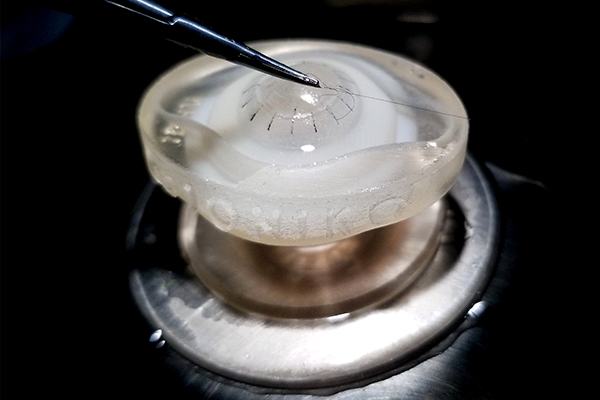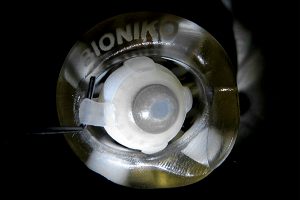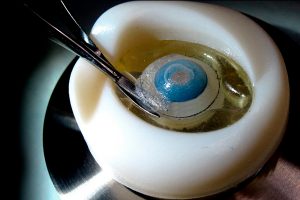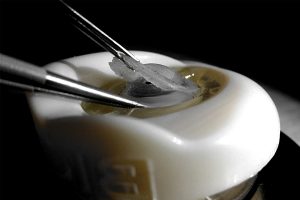CHARACTERISTICS
INSTRUCTIONS FOR USE:
- Immerse the donor cornea for at least 5 minutes in water. (Note: cornea looks “milky” when properly hydrated).
- Insert the host eye sclera into the ORBIT (compatible with BASIC-ORBIT and FLEX-ORBIT). Be careful not to damage delicate structures when inserting the models. Always press on the sclera.
- Refer to your ORBIT and accessories instructions for use.
- Use a dropper with water to lubricate the limbus before starting. NOTE: Lubricate with water frequently throughout the task to maintain hydration and realistic feel.
- Attach the donor corneal graft to the host eye limbus at evenly spaced points. Tension and location of the sutures should be as uniform as possible to minimize distortion of the cornea
Evaluate the task by reviewing the following parameters:
- * SUTURE EXECUTION PARAMETERS: These may include radiality, distance to donor edge, distance to host edge, intra-stromal vs penetrating, tension and spacing.
- * INSTRUMENTATION: These may include number of sutures breaks, number of needles bent, length of suture used.
- * TIME TO COMPLETION: Although in real surgery situations quality is more important than speed, at a basic skill training level, time to completion is a good indicator of a learning curve. As familiarity with steps and confidence with the technique increases, a decrease in time to completion is expected.
- Remove model-If using an ORBIT, insert a closed instrumentbehind the model and leverage it out of the socket. If using the posterior segment or any other accessory, please refer to its instructions for use.
INTRUCTIONS FOR CARE:
Follow these recommendations to maximize the life of your models:
- Store in a cool, dry and darkplace (a drawer will be fine). Extended exposure to some indoor lights or sunlight (UV) may affect material properties. Prolonged exposure to humidity or high temperatures may adversely affect material properties.
- Do not place heavy objects on top of the model’s box. Prolonged compression may deform the models.
Description
By presenting the main challenges of a penetrating keratoplasty (PKP) scenario, the KERATO task trainer allows users to learn, train and perfect the skills required to perform precise suturing under a microscope; a fundamental skill in ophthalmic surgery.





